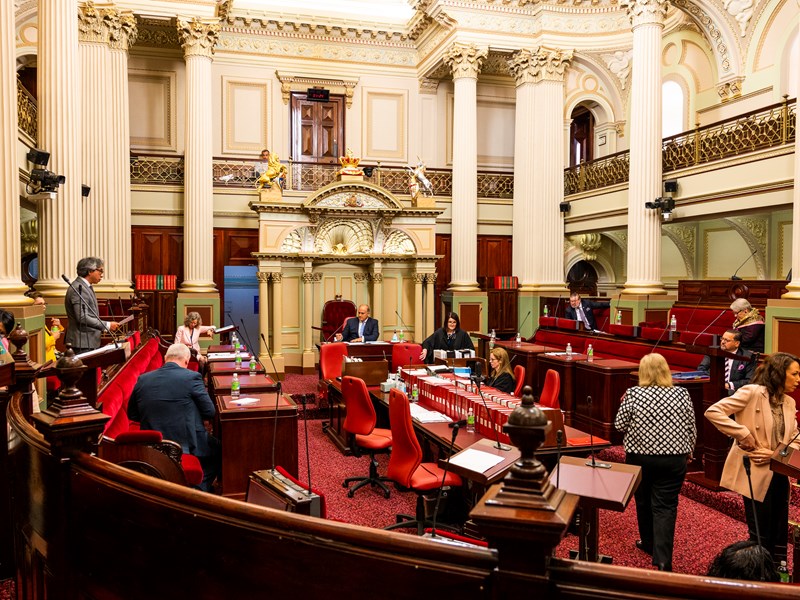Opening of Parliament
The Opening of Parliament is held on the first day the Parliament meets following a general election. It is a grand occasion, full of decisions, meetings, and historic traditions.
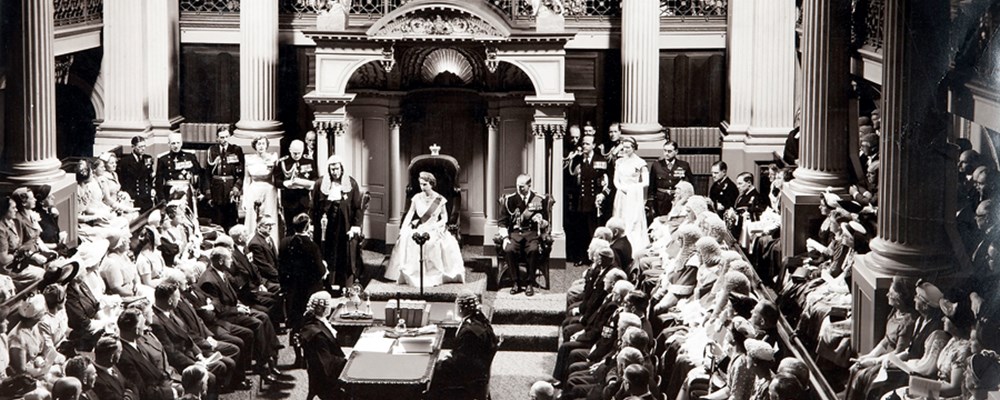
On this page
Introduction
An Opening of Parliament is the only time the three parts of the Parliament perform their duties in the same room. These parts are the Governor representing the Crown, the Legislative Assembly and the Legislative Council.
The ceremony is held on the first day the Parliament meets following a general election.
An Opening may also be held during the period between elections if Parliament is prorogued (suspended). The Governor announces an end to the current parliamentary session and stops all business until a new Opening of Parliament is held. Proroguing Parliament is very rare today.
Proroguing ParliamentIn the past, governments might ask the Governor to prorogue Parliament so they could re-introduce bills rejected by the Legislative Council. At the time, a rejected bill could not be discussed twice in the same parliamentary session.
Now, bills can be reintroduced within the same parliamentary session, if six months have passed since the bill was first introduced.
In 1954, Parliament was prorogued so that Queen Elizabeth II could attend an Opening of Parliament.
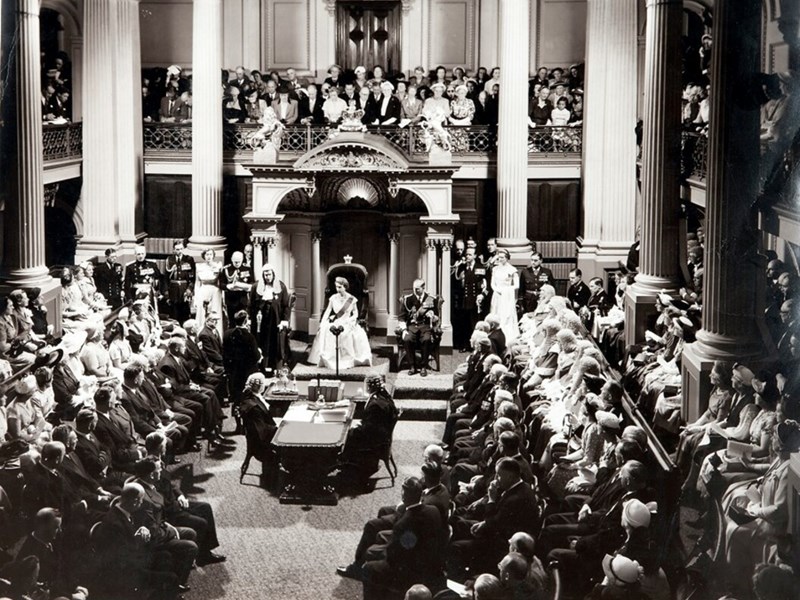
Swearing in members
The day of an Opening of Parliament begins by swearing in members of Parliament. This means that all members must take either:
- an oath with their hand placed on a religious text
- a non-religious affirmation.
In their oath or affirmation, members promise the will be loyal to the King. Under the Victorian Constitution they cannot be a member of Parliament unless they make this promise.
The swearing in of members is run by Commissioners. The Commissioners are chosen by the Governor and are usually senior Victorian judges.
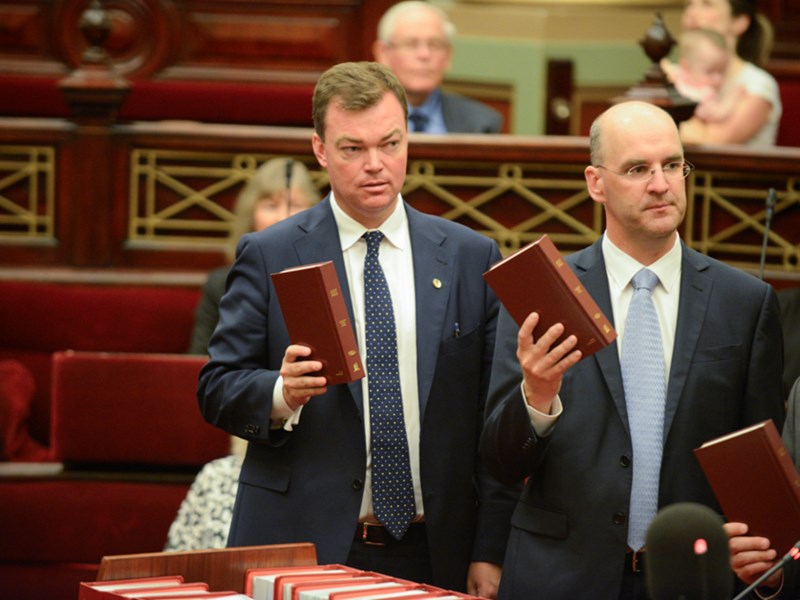
Election of the Speaker and the President
Next, each House of Parliament must elect a Chair- a Speaker for the Legislative Assembly and President for the Legislative Council. They will keep order in the Chamber during debates.
The Speaker and the President are chosen from amongst the members.
The process of electing a Speaker and President is the same.
- The Clerk calls for nominations.
- Members nominate candidates for the position.
- If there is more than one candidate, a vote is held. In the Council, members vote by standing. In the Assembly, a secret ballot is held.
- The candidate with the most votes is elected.
A Deputy Speaker and Deputy President are also elected.
The Houses are then adjourned (go on a break) until the afternoon.
The Governor arrives
The next stage of the day begins when the Governor leaves Government House and travels to Parliament House. They are greeted by the Usher of the Black Rod on the front steps.
Recent Openings have included activities to involve and acknowledge the traditional owners of the land, such as a Welcome to Country, smoking ceremony, or the presentation of a possum skin cloak to the Governor.

Summoning the Assembly
The Governor enters the Legislative Council and sits in the Vice Regal chair. They ask for members of the Legislative Assembly to be invited to the Council Chamber.
The Usher of the Black Rod walks to the front doors of the Assembly Chamber, which have been shut and locked. The Usher knocks on the door three times with the Black Rod.
The Serjeant-at-Arms opens the door. The Usher announces that the Governor wants all Assembly members to meet in the Council Chamber.
The Serjeant-at-Arms leads the Speaker and Assembly members across Queen's Hall and into the Council Chamber.
Knock knock!The tradition of knocking three times arose in the Westminster Parliament in 1641. The House of Commons was angered when the Usher entered without permission and demanded that next time he knock and wait to be called inside.
The Legislative Assembly door is covered with small dents and marks from the Black Rod.
Prior to 1951 the Victorian Parliament did not use a Black Rod. Instead, the Usher struck the door three times with the heel of his shoe.
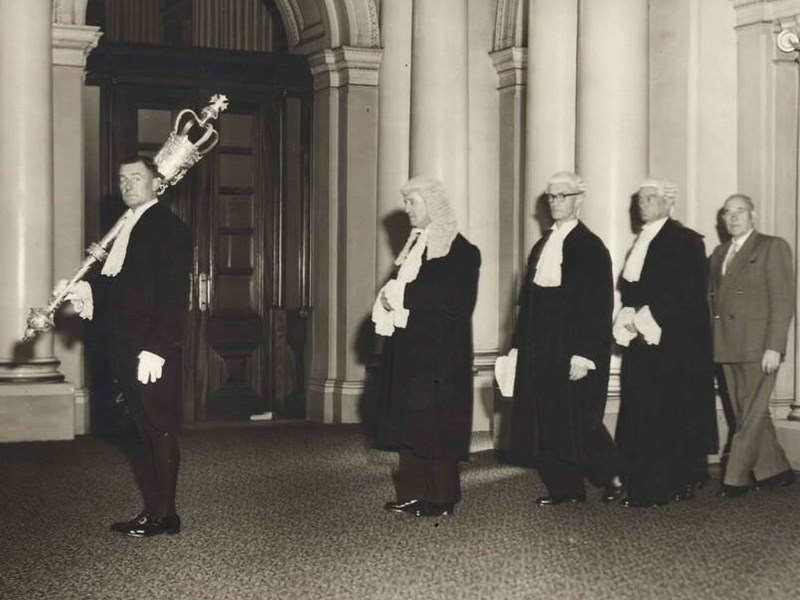
Opening speech
Once all Members have gathered in the Council Chamber, the Governor reads the Opening Speech. The speech is written by the government and outlines their plan for the Parliament.
The Governor formally declares the Parliament open.
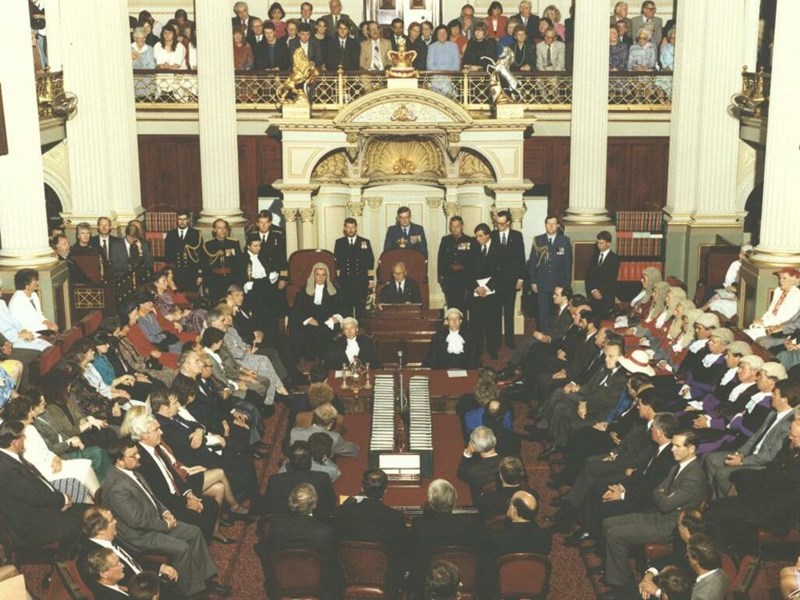
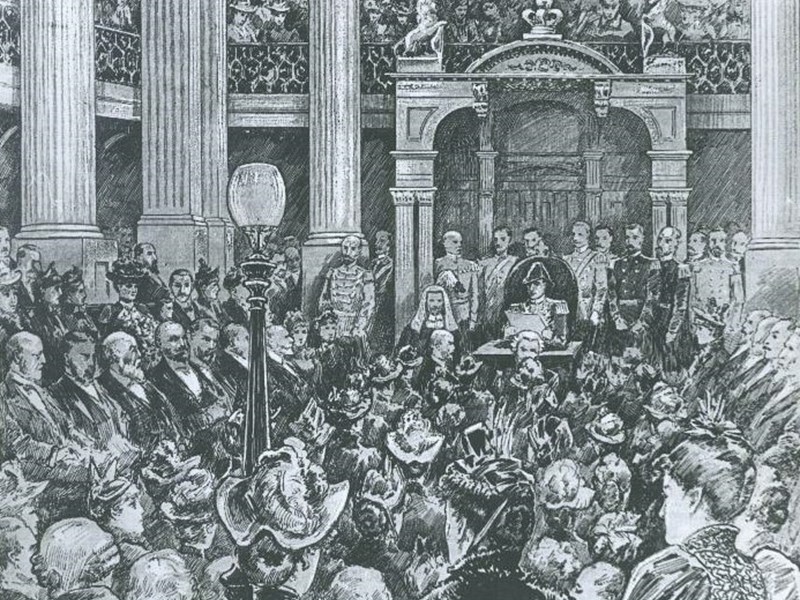
Address-in-Reply
Each House can formally reply to the Governor's speech. This is called the Address-in-Reply. A debate is held to decide what the Address-in-Reply will say.
